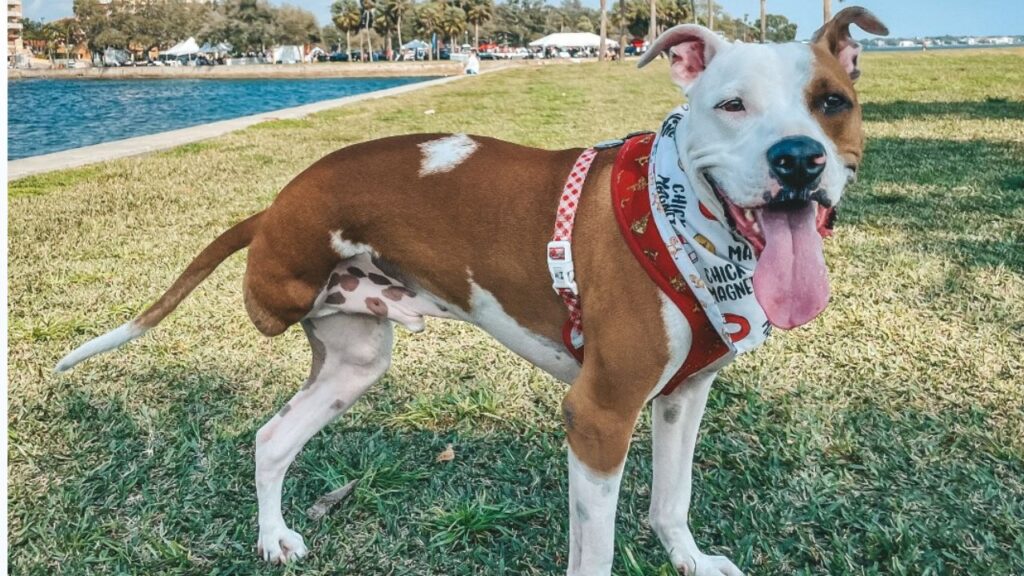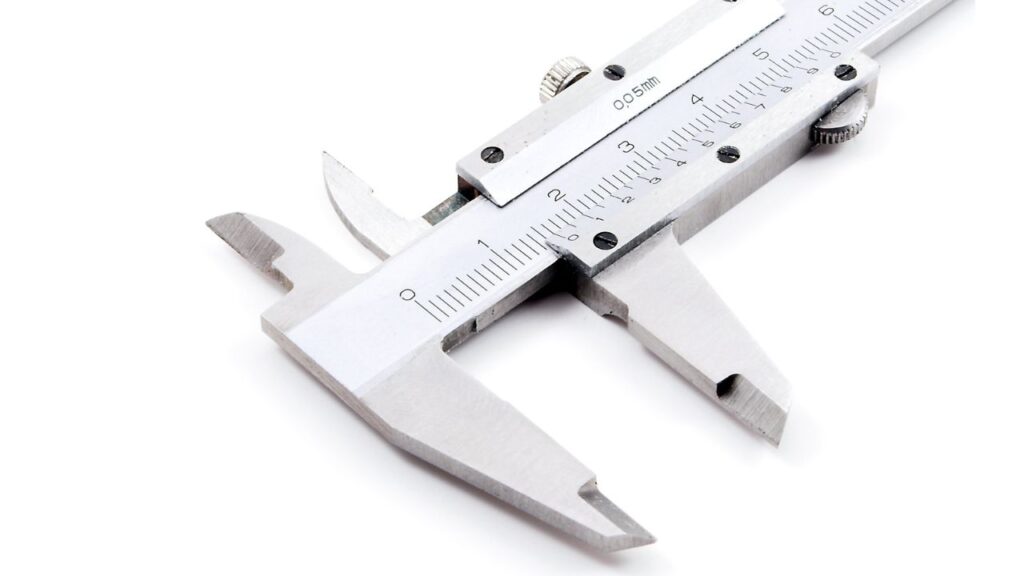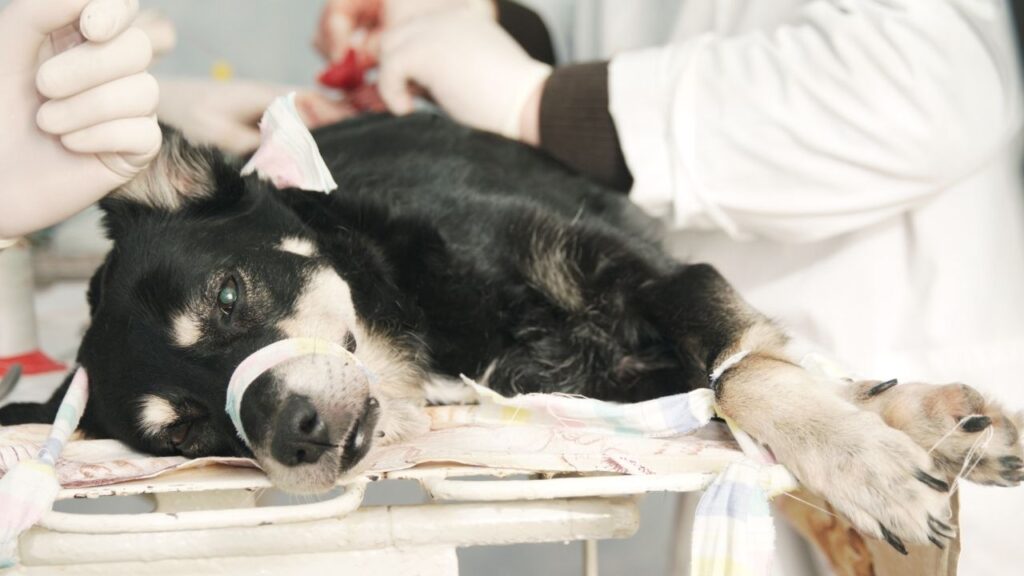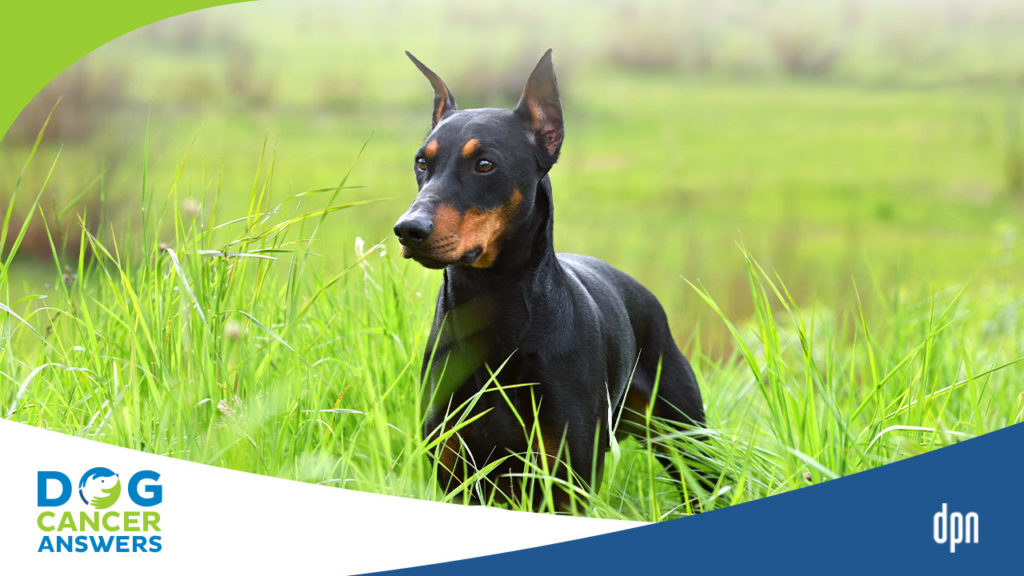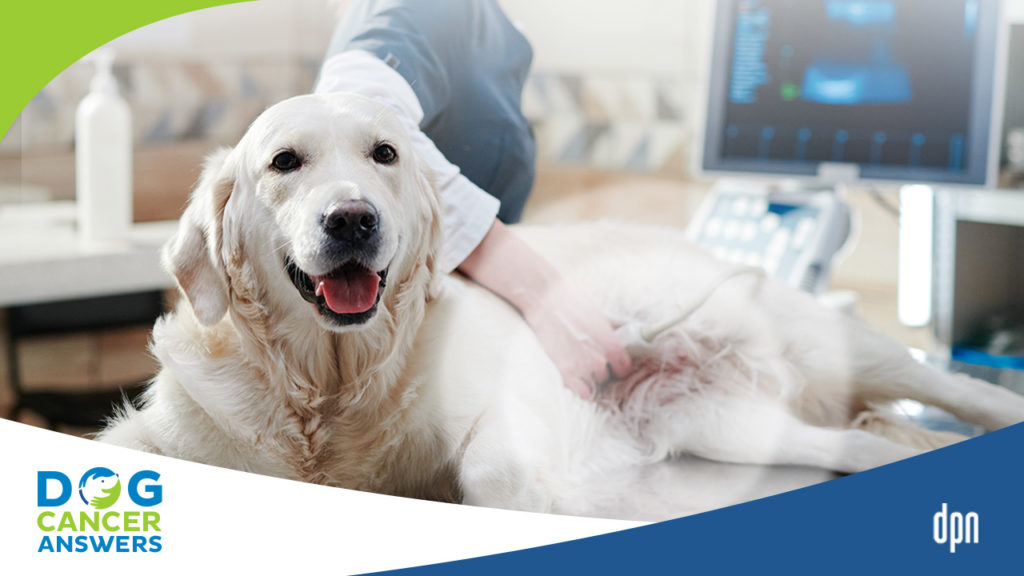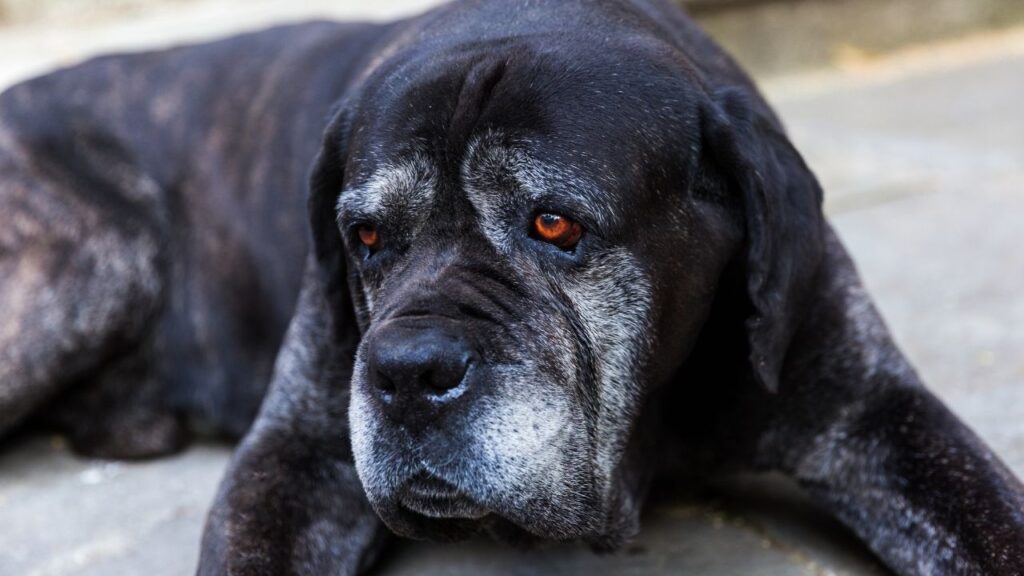Soft tissue sarcoma in dogs is a slow spreading cancer that can develop almost anywhere on your dog’s body. If accessible and detected early, it can be cured with surgery. However, larger tumors that are not candidates for surgical intervention may require additional treatment and recurrence is likely.
Key Takeaways
- Dogs with low-grade soft tissue sarcoma can live three years after complete surgical removal. High-grade soft tissue sarcoma generally has a shorter survival time.
- Soft tissue sarcoma is curable in dogs if the cancer is caught early and the tumor is completely removed.
- Soft tissue sarcoma in dogs can be aggressive, invading local tissues. However, it is usually slow-growing, giving you time to have the tumor removed with surgery.
- Low-grade soft tissue sarcomas are less likely to spread to other body areas, while high-grade tumors may be more aggressive.
- Soft tissue sarcoma can be painful if the tumor impacts nerves or interferes with walking or eating. Tumors that grow large and burst or are damaged can also be painful.
- We don’t know why some dogs get soft tissue sarcoma. Older, large-breed dogs are at higher risk.
- The symptoms of soft tissue sarcoma in dogs include a visible mass, pain, trouble walking for tumors on limbs, trouble eating if tumors are in the mouth, vomiting, weight loss, and lack of energy.
- Treating soft tissue sarcoma without surgery may be possible, but surgery is the most effective treatment.
Where Soft Tissue Sarcoma in Dogs Occurs
Soft tissue sarcoma, commonly abbreviated STS, is a broad term for tumors in soft and connective tissues.1,2
Your dog’s body has many different soft and connective tissues. Some examples include:1,2
- Muscles
- Blood and lymph vessels
- Nerves
- Tendons
- Fat
- Fascia (the thin layer of connective tissue that holds all of your dog’s bodily structures in place)
Soft tissue sarcoma can start as a single isolated tumor almost anywhere because soft and connective tissues are found throughout the body.3 Tumors are frequently given more specific names based on where the tumor started. Some examples include:1,3,4
- Fibrosarcoma
- Histiocytic sarcoma
- Leiomyosarcoma
- Liposarcoma
- Myxosarcoma
- Peripheral nerve sheath tumor
- Perivascular wall tumors (hemangiopericytoma)
- Rhabdomyosarcomas
Some of these, such as liposarcoma and rhabdomyosarcoma, can vary as to whether they are clinically defined as soft tissue sarcomas.3
Soft Tissue Sarcomas and Spread
If a soft tissue sarcoma is left untreated, the tumor will continue to grow. Although they are usually slow growing, they can invade underlying tissues and metastasize (spread) to faraway body parts. Tumors can also cause other problems as they become disfigured, bleed, and possibly become infected.5
Like all cancers, soft tissue sarcoma is easier to treat if caught and removed early, before it has had a chance to grow into surrounding tissues or spread elsewhere in the body.
Veterinary oncologist Dr. Sue Ettinger and Dr. Demian Dressler give an overview of soft tissue sarcoma.
Canine Soft Tissue Sarcoma Stats and Facts
- Overall, soft tissue sarcoma is relatively rare. One study from the United Kingdom estimated that only 15% of tumors in the skin and 7% of tumors below the skin were soft tissue sarcoma.6,2
- Another study suggested that soft tissue sarcoma constitutes 20% of malignant cancer cases involving the skin.3
- It is estimated that only 5% of canine cancer deaths were caused by soft tissue sarcoma.7
Causes of Soft Tissue Sarcoma in Dogs
There is no specific known cause of soft tissue sarcoma in dogs, and it is likely multifactorial, like other cancers.1
However, chronic inflammation and inflammation due to infection may generally increase the risk of developing cancer. This includes the inflammation caused by medical implants and other foreign bodies in sites that later develop soft tissue sarcoma.1
Previous radiation treatments may also predispose dogs to develop soft tissue sarcoma at the radiotherapy site.1
This does not mean all soft tissue sarcoma develops directly due to inflammation in an area; just that prior inflammation may predispose that area to develop a soft tissue sarcoma.
The artificial selection of physical traits and characteristics for particular dog breeds may also play a role in the likelihood of developing soft tissue sarcoma, with some breeds showing increased rates of this disease.8,7
Risk Factors
There are a variety of risk factors that can increase the chances of developing soft tissue sarcoma, including breed and age.
Breeds known to be at risk for soft tissue sarcoma are predominately larger and include:7,9
- Boxer
- Bernese Mountain Dog
- Airedale Terrier
- Great Dane
- Saint Bernard
- Basset Hound
- Golden Retriever
Like most cancers, middle-aged and older dogs are more at risk than their younger counterparts.1,2,3
Soft tissue sarcoma rates do not seem to differ between male and female dogs, and therefore sex does not appear to be a risk factor.1, 3.
Soft Tissue Sarcoma in Dogs Symptoms
If your dog has soft tissue sarcoma, their symptoms will depend on the tumor’s location and type.
Some dogs show no symptoms until you feel a mass, while others may show more general signs that something is wrong. Some symptoms that you might notice include:10
- A mass (lump) in or under your dog’s skin or in the muscle
- Painful reactions when the tumor is touched, such as yelping and pulling away
- Weight loss
- Limping
- Difficulty moving
- Decreased activity
- Bad breath
- Difficulty chewing
- Bleeding from the mouth
- Vomiting
- Diarrhea
- Difficulty urinating or defecating
Lameness and difficulty moving are usually associated with a mass on or near one of your dog’s legs, while issues with the mouth are usually associated with an oral tumor.
Soft tissue sarcoma that are internal can be difficult to notice and are more dangerous, as the mass may not be noticeable until it has reached a larger size. A tumor pressing on abdominal organs could cause vomiting, diarrhea, or loss of appetite.
Diagnosis for Soft Tissue Sarcoma
When you take your dog to the vet after finding a lump or bump, the first thing that your vet will want to do is look at the cells in the lump. There are two primary ways to do this: with a fine needle aspirate or a biopsy.
Fine needle aspiration is a quick procedure where your vet will insert a needle into the mass to gather cells. The aspirated cells are then examined under a microscope for abnormalities that may suggest cancer. If your veterinarian is unsure, they may send the sample out to be investigated by a veterinary pathologist.1 Your vet may also take a sample of the lymph nodes closest to the site of the mass to look for suspicious cells that could indicate cancer has spread.
In a biopsy, your veterinarian will cut out a small area of the tumor and submit it to a pathologist to be examined for signs of malignancy. The pathologist will use the characteristics of the cells to identify the type of cancer present.
Prognosis and Staging Soft Tissue Sarcoma in Dogs
Once your dog has been diagnosed with soft tissue sarcoma, your veterinarian and/or oncologist will use the results from various tests to determine if the cancer has spread, the level of invasiveness, and how aggressive the tumor is. This process is called staging.
Tests that your veterinary team may recommend during staging include:3,12,13
- Histopathology (examining a sample of the tumor under a microscope)
- Blood work to evaluate overall health
- Urinalysis to evaluate overall health
- Imaging such as X-rays, ultrasound, CT, or MRI to look for metastasis
- Lymph node aspirates to check for metastasis
Some of these tests may have already been done when you got your dog’s initial diagnosis.
Canine Soft Tissue Sarcoma Grading Indicates Survival Time
When your dog’s tumor is sent out to a pathologist, one of the things that will come back with the report is a grade. The grade will give you and your veterinarian more information about the median survival time.
Soft tissue sarcoma is usually graded low, intermediate, or high based on how aggressively the pathologist thinks the tumor will behave.
The prognosis for soft tissue sarcoma is fairly good so long as the tumor is low to intermediate grade and can be completely removed.13 For dogs that meet these criteria, approximately 85% remain cancer free for three years.13
If your dog has a low or intermediate-grade soft tissue sarcoma and it cannot be completely removed (has incomplete margins), radiation is usually recommended to help destroy remaining cancer cells. If radiation is not done for these tumors, then you can expect your dog to experience a reoccurrence of cancer within one to three years.3,13
High-grade soft tissue sarcoma has a more guarded prognosis. This means that your dog’s cancer has a questionable outlook. Your veterinarian or oncologist may recommend chemotherapy to delay or prevent further spread of your dog’s STS. However, median survival times still clock in at only about a year for high-grade tumors.13
If the tumor has metastasized to deeper tissues and structures, it becomes even more inaccessible and is more likely to recur. This ultimately shortens survival time even more.
Treatments for Canine Soft Tissue Sarcoma
Surgery is usually the most important part of treating soft tissue sarcoma in dogs, and low-grade tumors that are completely removed can be fully cured. There are also a variety of other treatments that can be used along with surgery or when surgery is not an option.
Surgery
Whenever possible, your dog’s best bet is to have the tumor completely removed via surgery. 1,4,12,13 Your dog’s surgeon will try not to leave any portion of the tumor behind.
If the tumor is not fully excised (cut out) or if it recurs, your pet may need a second surgery.13
Unfortunately, if your dog’s soft tissue sarcoma is located on a limb, an amputation may be necessary to remove the tumor completely.2,4
Dr. Nancy Reese helps a listener understand the pros and cons of amputation in this special episode of DOG CANCER ANSWERS.
Chemotherapy
Chemotherapy is usually only used for soft tissue sarcoma tumors that are high-grade or have spread.13 It is almost never recommended for low-grade tumors.3
Chemotherapy may also be recommended if your dog had surgery, but the procedure was unsuccessful.1
The exact chemotherapy drug(s) administered will depend on the kind of soft tissue sarcoma your dog is diagnosed with. Doxorubicin, cyclophosphamide, ifosfamide, and 5-fluorouracil are all possibilities.1,3
Metronomic chemotherapy may also be an option. Metronomic chemotherapy consists of lower daily doses given by mouth. Cyclophosphamide and chlorambucil are the most common drugs chosen for these protocols.1,3
Even though chemo is sometimes used, there is not much information in the literature about the benefits of chemotherapy for soft tissue sarcoma in dogs.1
- One small study showed increases in the length of tumor-free periods and minimal side effects for dogs that were given 5-fluorouracil injections around the surgical site.15
- Another study found that doxorubicin had no appreciable benefit for dogs with soft tissue sarcoma and did not decrease recurrence, increase survival time, or decrease the spread of soft tissue sarcoma.16
In humans, doxorubicin with and without ifosamide had modest results in increasing survival, decreasing the risk of reoccurrence, and slowing down metastasis.14
Electrochemotherapy, or the application of electric pulses to tumors to enhance chemotherapy response, is breaking ground in veterinary medicine.
Electrochemotherapy allows otherwise non-permeable drugs to penetrate the cell membrane and destroy cancer cells.5,21 This method may increase the effectiveness of chemotherapy for soft tissue sarcoma in dogs in the future.
Radiation
Radiation may be an option if your dog’s tumor is not operable, or if the surgeon cannot completely remove it during surgery.13
There are two main approaches to radiation: definitive intent and palliative intent.
- Definitive intent radiation is a more aggressive protocol designed to kill cancer locally. Exact protocols will vary depending on tumor type and location and your oncologist’s preferences, but a common protocol is to irradiate the tumor five days a week for a total of 18-19 treatments.
- Palliative radiation is done to relieve cancer symptoms but not cure it and can slow tumor growth. Palliative radiation protocols are typically less time-intensive, such as doing a radiation treatment once a week over six weeks.5
Immunotherapy
Immunotherapy is not likely recommended for canine soft tissue sarcoma at this time, but there may be options in the future.
One case report looked at a dog with high-grade soft tissue sarcoma at the site of a vaccine administration. After going through two surgeries, she was treated with the tyrosine kinase inhibitor toceranib (Palladia) and achieved remission for about two years.18
The benefits of tyrosine kinase inhibitors like toceranib and masitinib are currently unknown for soft tissue sarcoma.17
Vaccine
Vaccines that protect against soft tissue sarcoma are on the horizon but are not currently in routine use.19 A 2007 study using a xenogenic VEGF vaccine reported a 30% response rate, demonstrating that this vaccine has the potential to be useful.20
Pain and Inflammation Medications
Analgesic drugs such as non-steroidal anti-inflammatory drugs (NSAIDs) may be prescribed to reduce pain, and antibiotics could be recommended or even necessary if your dog’s tumor becomes infected.1
Diet
There are no specific dietary recommendations for dogs with soft tissue sarcoma. If your dog’s tumor is in her mouth, she may need a soft or canned diet to make eating easier and more comfortable.
Supplements
Supplements can be a great addition to your dog’s diet and can easily add cancer-fighting compounds to their daily treatment routine. Although there are no specific products for soft tissue sarcoma, supplements like medicinal mushrooms, curcumin extracted from turmeric, and fish oil with omega-3 fatty acids offer numerous general wellness benefits, such as helping to reduce inflammation.22
You can also tailor supplements to address your dog’s particular symptoms. For example, milk thistle can combat chemotherapy’s negative impacts on the liver and kidney, and probiotics can help keep your dog’s gut microbiome healthy for a properly functioning gastrointestinal tract. Hemp or CBD oil can also be utilized for pain management.23
Always speak to your veterinarian about the supplements you are considering. Supplements can interact with each other and with medications, and it’s best to get advice specific to your dog’s case.
Integrative Treatment for Canine Soft Tissue Sarcoma
Acupuncture is an excellent option to relieve pain caused by the tumor or during recovery from surgery.1,24,25 Acupuncture can also aid in minimizing the negative side effects associated with chemotherapy such as nausea, vomiting, diarrhea, and neutropenia (a reduced amount of white blood cells called neutrophils, which are important for fighting off infection).25
In Trials Now: HIFU
Cancer researchers always seek new, better treatments to help dogs and humans with cancer. One emerging therapy is high-intensity focused ultrasound (HIFU). HIFU is a noninvasive method that uses ultrasound to raise the temperature of a precise location on the body to destroy cancer cells and may be a future treatment option for dogs.4
Histotripsy, or mechanical HIFU, works similarly but does not heat the tissues. Instead, this method breaks down tumors through cavitation or the buildup of a bubble cloud within the tumor.11 This method is being studied in clinical trials at the Virginia-Maryland College of Veterinary Medicine.
Dr. Joanne Tuohy joins us on DOG CANCER ANSWERS to explain her clinical trials on high intensity focused ultrasound, a treatment that destroys tumors with soundwave and may be useful for soft tissue sarcomas in the future.
The End Stages for Canine Soft Tissue Sarcoma
The end stages of soft tissue sarcoma greatly depend on where the tumor is located and if it metastasizes.
As the tumor grows, it may physically block your dog’s normal movement, eating, or even breathing. Your dog may struggle with pain or have trouble getting around due to lameness or loss of a limb. They may have trouble eating or maintaining weight or could struggle with chronic diarrhea.
Soft tissue sarcoma rupture can occur, where the tumor becomes so large, or the skin becomes so fragile, that it bursts and bleeds.
Ultimately, these signs and symptoms impact your dog’s quality of life. When this reaches a level that you feel is unacceptable and unfair to your dog, then it may be time to consider hospice care and/or euthanasia.
Prevention Strategies
There are no specific prevention strategies for soft tissue sarcoma in dogs, but key cancer prevention measures include:
- taking your dog to the veterinarian for regular exams
- feeding a high-quality diet
- keeping your dog at a healthy weight
If your dog has already had soft tissue sarcoma in the past, you will want to monitor for tumor recurrence with a veterinary exam every three months.3
- O’Brien D, Waltman S. Sarcomas, soft tissue (canine). Veterinary Information Network. Published December 18, 2015. Available at: https://www.vin.com/doc/?id=7208269&pid=607. Accessed January 24, 2023.
- Liptak JM, Christensen NI. Chapter 22: Soft tissue sarcomas. In: Vail DM, Thamm DH, Liptak JM, eds. Withrow and MacEwen’s Small Animal Clinical Oncology. 6th ed. Elsevier Inc.;2020:404-31.
- Hohenhaus AE, Kelsey JL, Haddad J, et al: Canine Cutaneous and Subcutaneous Soft Tissue Sarcoma: An Evidence-Based Review of Case Management. J Am Anim Hosp Assoc. 2016;52(2):77-89.
- Seward MC, Daniel GB, Ruth JD, Dervisis N, Partanen A, Yarmolenko PS. Feasibility of targeting canine soft tissue sarcoma with MR-guided high-intensity focused ultrasound. Int J Hyperthermia. 2018;35(1):205-215. doi:10.1080/02656736.2018.1489072
- Brooks, W. Hemangiopericytoma in dogs. Veterinary Partner. August 18, 2003. Available at: https://veterinarypartner.vin.com/doc/?id=4951962&pid=19239 . Accessed January 24, 2023.
- Dobson JM, Samuel S, Milstein H, et al. Canine neoplasia in the UK: estimates of incidence rates from a population of insured dogs. J Small Anim Pract. 2002;43:240–246.
- Schiffman JD, Breen M. Comparative oncology: what dogs and other species can teach us about humans with cancer. Philos Trans R Soc Lond B Biol Sci. 2015;370(1673):20140231. doi:10.1098/rstb.2014.0231
- Vonholdt BM, Pollinger JP, Lohmueller KE, et al. Genome-wide SNP and haplotype analyses reveal a rich history underlying dog domestication. Nature. 2010;464(7290):898-902. doi:10.1038/nature08837
- Dobson JM. Breed-predispositions to cancer in pedigree dogs. ISRN Vet Sci. 2013:941275. doi:10.1155/2013/941275
- Blue Pearl Specialists. Soft tissue sarcomas in dogs. Blue Pearl Pet Hospital. Published August 17, 2016. Available at: https://bluepearlvet.com/medical-articles-for-pet-owners/soft-tissue-sarcomas-in-dogs/ . Accessed January 24, 2023.
- Ruger L, Yang E, Gannon J, et al. Mechanical high-intensity focused ultrasound (histotripsy) in dogs with spontaneously occurring soft tissue sarcomas. IEEE Transactions on Biomedical Engineering. 2023;70(3):768-779. doi:10.1109/tbme.2022.3201709
- Ehrhart N. Soft-tissue sarcomas in dogs: a review. J Am Anim Hosp Assoc. 2005;41:241–246.
- Soft tissue sarcoma in dogs. University of Florida College of Veterinary Medicine. No publication date available. Available at: https://smallanimal.vethospital.ufl.edu/clinical-services/oncology/types-of-cancer-and-treatment/soft-tissue-sarcoma-in-dogs/. Accessed January 10, 2023.
- Pervaiz N, Colterjohn N, Farrokhyar F, et al. A systematic meta-analysis of randomized controlled trials of adjuvant chemotherapy for localized resectable soft-tissue sarcoma. Cancer 2008;113:573–581
- Marconato L, Comastri S, Lorenzo MR, et al. Post-surgical intra-incisional 5-fluorouracil in dogs with incompletely resected, extremity malignant spindle cell tumours: a pilot study. Vet Comp Oncol 2007;5:
239–49. - Selting KA, Powers BE, Thompson LJ, et al. Outcome of dogs with high-grade soft tissue sarcomas treated with and without adjuvant doxorubicin chemotherapy: 39 cases (1996-2004). J Am Vet Med Assoc 2005;227:1442–1448
- Iwaki Y, Lindley S, Smith A, et al: Canine myxosarcomas, a retrospective analysis of 32 dogs (2003-2018). BMC Vet Res. 2019;15(1):217.
- Jacobs TM, Poehlmann CE, Kiupel M. Injection-Site Sarcoma in a Dog: Clinical and Pathological Findings. Case Rep Vet Med. 2017;2017:6952634. doi:10.1155/2017/6952634
- Borgatti A, Dickerson EB, Lawrence J. Emerging therapeutic approaches for canine sarcomas: Pushing the boundaries beyond the conventional. Vet Comp Oncol. 2020;18(1):9-24. doi:10.1111/vco.12554
- Kamstock D, Elmslie R, Thamm D, Dow S. Evaluation of a xenogeneic VEGF vaccine in dogs with soft tissue sarcoma. Cancer Immunol Immunother. 2007;56(8):1299-1309. doi:10.1007/s00262-007-0282-7
- Tozon N, Lampreht Tratar U, Znidar K, Sersa G, Teissie J, Cemazar M. Operating Procedures of the Electrochemotherapy for Treatment of Tumor in Dogs and Cats. J Vis Exp. 2016;116:54760. doi:10.3791/54760
- Dressler D, Ettinger S. The Dog Cancer Survival Guide. Maui Media;2011.
- Raditic, D, Gaylord, L. Supplements for small animal cancer patients. Today’s Veterinary Practice. Published February 24, 2021. Available at: https://todaysveterinarypractice.com/nutrition/supplements-for-small-animal-cancer-patients/. Accessed January 24, 2023.
- Silva NEOF, Luna SPL, Joaquim JGF, Coutinho HD, Possebon FS. Effect of acupuncture on pain and quality of life in canine neurological and musculoskeletal diseases. Can Vet J. 2017;58(9):941-951.
- Choi, KH. Application of acupuncture and moxibustion for small animal cancer. World Small Animal Veterinary Association World Congress Proceedings. 2011;VIN https://www.vin.com/doc/?id=5124193. Accessed on January 24, 2023.
Topics
Did You Find This Helpful? Share It with Your Pack!
Use the buttons to share what you learned on social media, download a PDF, print this out, or email it to your veterinarian.
